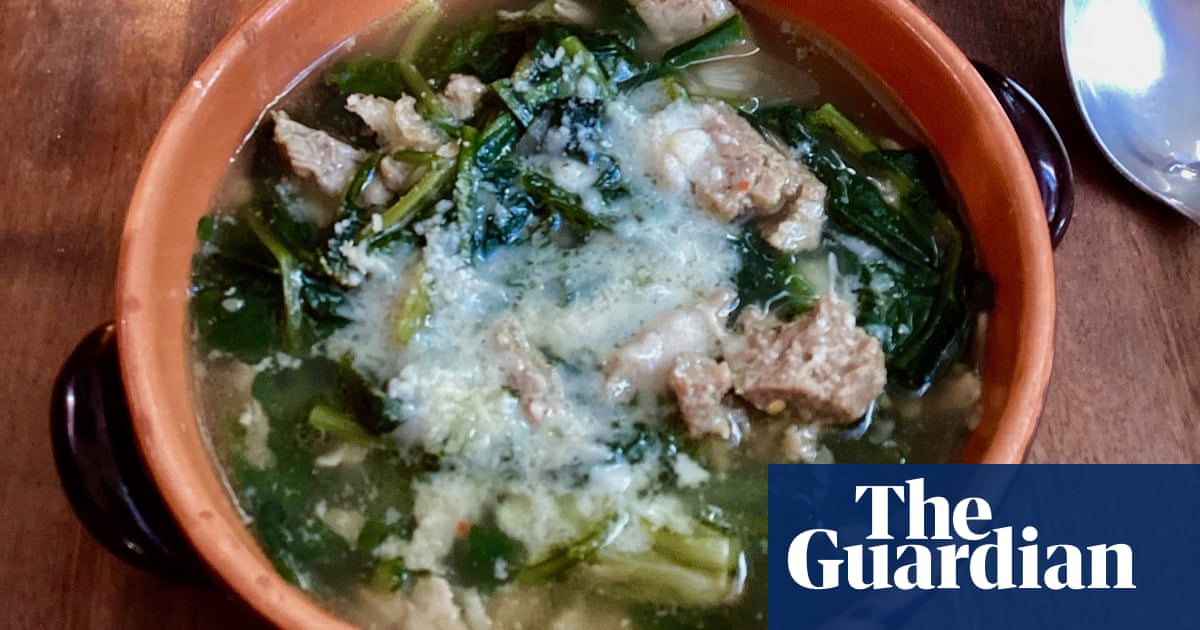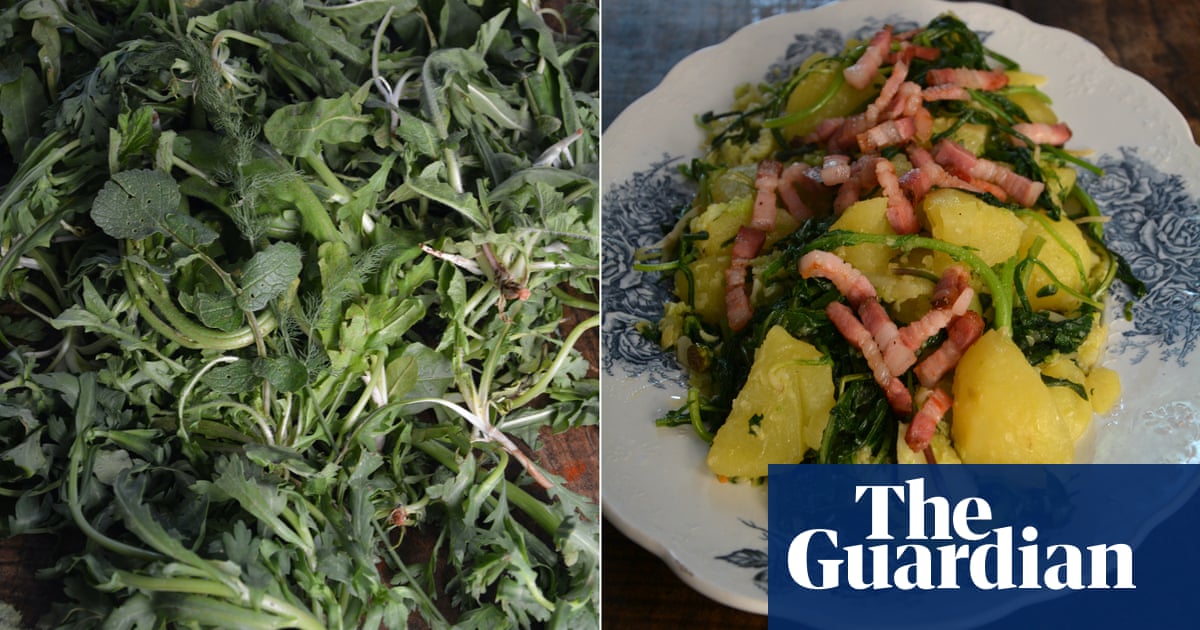
The principle of minestra maritata is simple: various cuts of pork are simmered in water to make a broth, which is then strained and used to cook a large quantity of mixed greens, before the boiled meat is returned to the pot and the dish is finished with cheese. The name comes from the idea that the vegetables and the meat si maritano (get married). It’s a bit of stovetop polygamy, because all of those involved contribute to the flavour of this brothy, deeply tasty soup that’s traditionally served at Christmas or Easter, and on most days at Hosteria il Brigante in Salerno, which is run by a man who used to be a dentist and where I first tasted it.
As well as the excellent memory of dark greens and bits of pork in a slightly gelatinous broth, and red wine, my starting point was Jeanne Caròla Francesconi’s magnificent La Cucina Napoletana. She begins with a short telling of a long history of a dish also known as pignatto grasso, which embodies the idea of Neapolitans as mangiafoglie (leaf-eaters) before they were mangiamaccheroni (pasta-eaters). She notes how rare it was to find anywhere making minestra maritata in the traditional way (she was writing in 1992) – that is, using seven types of pork: a prosciutto bone, pork skin, fresh pork, pork ribs (tracchiolelle), salame (pezzentelle), sausages and lard, as well as a big bunch of mixed herbs. While the greens she suggests are broccoli, chicory, escarole and two types of cabbage (the smooth-leaved cappuccio and an old variety with stiffly ruffled leaves called torzelle). She also offers a modern adaptation that calls for just six types of pork.
I have adapted (reduced) her recipe further (and, I hope, respectfully), to use just pork ribs, pork sausages and a 10cm x 10cm piece of pork skin I had in the freezer, with a mixture of broccoli, chicory, escarole and cabbage. Of course, you can expand or adapt according to what is available to you, but I do recommend using a selection of greens here (the more robust and darker, the better); savoy cabbage, spring greens, kale or dandelions will all work well, too. Whatever the selection of meat, the most important thing is to give it a long, slow simmer so the broth develops a full flavour. It’s true the meat gives much of itself during the simmering, but, after a short divorce on straining, it takes flavour back when it remarries the broth and greens.
Both of Francesconi’s recipes call for 100g cubed caciocavallo cheese to be boiled along with the greens! Using cheese in this way is still surprising to me, but also ingenious: great flavour, good fat and all-round seasoning, which most likely means you won’t need to add more salt. For the modern version, she also suggests putting a bowl of grated parmesan on the table and encouraging everyone to help themselves, which makes the broth cloudy and, marriage or not, keeps things together.
Neapolitan-inspired soup with greens, sausage and cheese
Serves 4
4 pork ribs
4 large (or 8 small) pure pork sausages
1 small piece of pork skin, if you can get hold of one
1 onion, peeled and halved
1 stick of celery
1 carrot
A few parsley stalks
Salt
1 small broccoli, broken into florets, or 1 bunch of cime di rapa
500g mixed greens – cabbage, spinach, escarole, chicory
A pinch of red chilli flakes
Grated pecorino or parmesan, to serve
Put the pork ribs, sausages, pork skin (if using), onion, celery, carrot and a few parsley stalks in a large pan, cover with 2.2 litres of water and add a pinch of salt. Bring to a boil, then turn down to a simmer and cook for two hours, skimming the surface if necessary.
Strain the broth, discarding the vegetables and setting the meat aside. Once the meat is cool, pull it from the ribs and chop or crumble the sausages. Once the broth is cool, use a sieve to skim away the top layer of fat.
Wash the greens, discarding any scraggy ends, and chop roughly. If you are using chicory, that will first need boiling in salted water for five minutes, then draining.
Bring a litre and a half of the broth back to a boil, add the greens and a good pinch of chilli, and simmer for 20 minutes. Add the meat to the pan and simmer for another five minutes (alternatively, serve the meat separately, so people can add their own). Serve, passing around more chilli and grated parmesan for people to help themselves.












